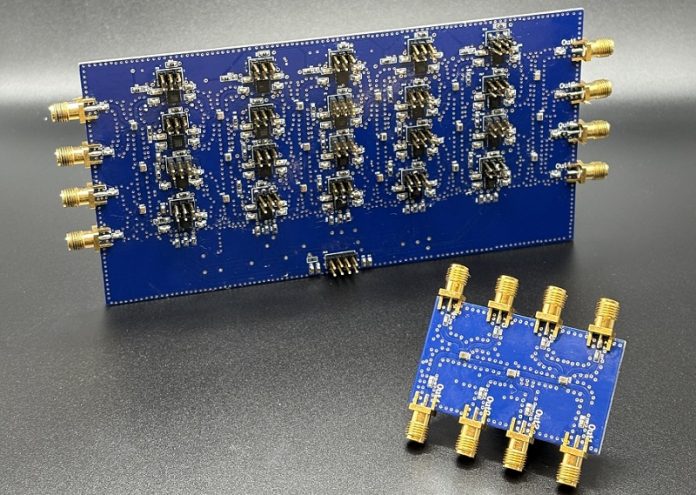
A team of scientists has taken a big step toward a new kind of computing that could work at the speed of light.
Instead of relying on today’s digital processors, which are limited by how fast transistors can switch on and off, researchers have created a programmable analog circuit that uses high-frequency electromagnetic waves to perform calculations.
The work was led by Dr. Rasool Keshavarz from the University of Technology Sydney (UTS) and Associate Professor Mohammad-Ali Miri from the Rochester Institute of Technology (RIT), together with colleagues Dr. Kevin Zelaya (RIT) and Associate Professor Negin Shariati (UTS).
Their study, published in Nature Communications, shows that analog computing could one day replace or complement traditional digital processors in fields where massive calculations need to happen instantly and with less power.
Analog computing isn’t new, but this research takes it to a new level.
Unlike digital computers, which use bits and transistors to process information step by step, analog systems use continuous signals like electromagnetic waves.
This allows them to carry out many calculations in parallel, dramatically speeding things up while using far less energy.
The researchers designed the first programmable microwave-integrated circuit that can carry out matrix transformations, which are a type of mathematical operation central to modern technologies.
“We’ve bridged physics and electronics to design this new system,” explained Dr. Miri. “It opens the door to a new era of ultra-fast analog processors.”
The potential uses are wide-ranging. Future analog processors could make wireless networks faster and more efficient, improve radar and sensing technologies for defense and space, and enhance monitoring systems in mining and agriculture. They could also provide powerful new tools for industrial and scientific research, where large amounts of data need to be processed in real time.
Dr. Keshavarz emphasized that this approach is very different from quantum computing, which has attracted a lot of attention but still faces major hurdles with stability and scalability. “Our platform is feasible today,” he said. “It can deliver real-world applications much sooner.”
Associate Professor Shariati added that the project was a great example of international teamwork across electronics, physics, and photonics. By turning a bold concept into a working prototype, the researchers have laid the foundation for a new computing paradigm.
The team is now working on follow-up studies to make the technology practical for larger systems.
If successful, computing could soon move beyond the limits of digital chips and into an era where light-speed analog processing powers the technologies of tomorrow.



